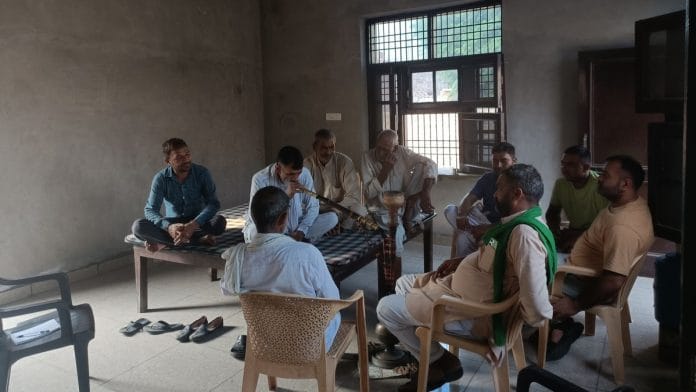Sonepat/Jind (Haryana): Rajbir Singh spent July wishing for rain. By September, he was cursing it. Just as he was gearing up to harvest his 1.5 acres of rice in Sonepat’s Sisana village, two days of heavy rainfall on 19 and 20 September flattened his crops. Over 60 per cent of his yield was wiped out by the delayed and prolonged rains. Now, his only hope is to sell what’s left and prepare his field for the wheat crop in October—if the rains stop in time.
“Even two days of heavy rain during August and September can cause so much damage to farmers. It ruins crops, and delays both the rice harvest and wheat sowing,” said Rajbir, who has been anxiously waiting for the southwest monsoon to finally withdraw.
Rajbir’s struggle is shared by farmers across Haryana. Some watched helplessly as heavy, scattered rains hammered mature crops; others said their harvests were delayed by the monsoon’s late arrival and lingering retreat. As worries about stubble burning and Delhi-NCR pollution rise, Haryana farmers are now talking about switching to underground crops like turmeric and root vegetables— which can better withstand the heavy, unpredictable rainfall. The trigger for all these concerns—extreme weather changes.
This year’s monsoon stood out due to the shift from a receding El Niño to an advancing La Niña, bringing heavier rains toward the end of the season and stretching the withdrawal period by a week. But experts point out that monsoons in northwest India have been growing more erratic for years.
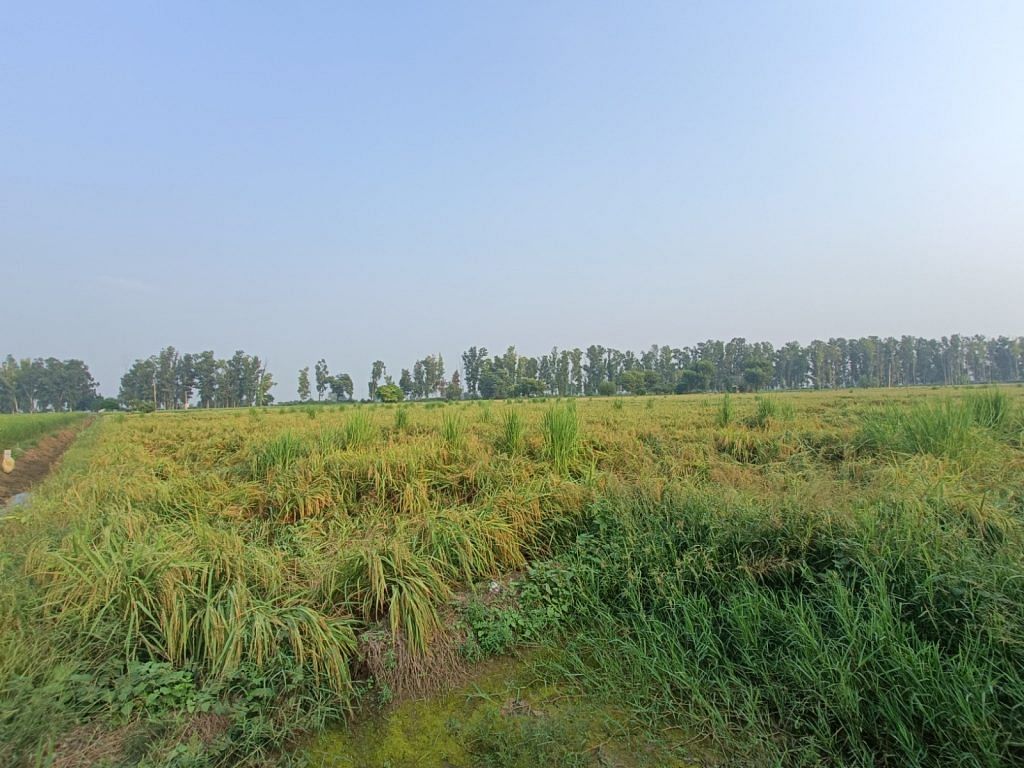
“We have noticed a delay in the initiation of the monsoon withdrawal over northwest India for the last few years now,” said Akshay Deoras, research scientist at the National Centre for Atmospheric Sciences, University of Reading, UK. “As the date for monsoon withdrawal stretches, it not only impacts the kharif harvest but also the entire agricultural cycle in northern India.”
The India Meteorological Department (IMD) partly predicted a skewed monsoon, citing La Niña effects that typically bring heavier rain toward the end of the season. But farmers didn’t plan for the double whammy—first the deficit rainfall of June and July and then downpours long after the expected 17 September retreat of the monsoon. It’s hit kharif crops across North India, and now farmers are fretting about a dampening effect on their next crop as well.
Even with MSP guarantees, the increasingly fickle climate is making ‘reliable’ rice and wheat harder to grow.
Also Read: How Punjab farmers sacrificed high income for a big cause—they gave up Pusa-44 this year
Too much, too late
In Uchana Khurd village of Jind district, farmer Anil Singh waited weeks for the first rain of the season in July. Paddy, the main crop in his region, relies on early monsoon showers to moisten the soil and prepare the field for the water-heavy crop. The sowing season for paddy in Haryana and Punjab is usually between 20 June and 1 July, but Jind didn’t see rains until well into August. By the time he could plant, it was already too late.
His rice crop was doomed—a casualty of too little rainfall and poor-quality water.
“I waited to plant paddy until 20 July, thinking the rains would come any day now. But they didn’t, and water from the tubewells is brackish,” he said.
For centuries, farmers have designed sowing schedules keeping the climate in mind. But now we can’t even trust the climate
-Captain Bijendra Dahiya, farmer and BKYU member
To help offset his losses, Anil Singh switched gears and planted a second crop of bajra in his half-acre plot in late August, hoping to harvest it by September. But the mid-September rains damaged his bajra crops just as they were maturing, and he is now left with barely 40 per cent of his yield intact.
Both paddy and bajra are usually harvested by the end of September or early October since cutting, threshing, drying takes about 15-20 days. By 1 November, farmers want to prepare their fields for sowing wheat, the rabi crop.
“When crops are mature—right before the harvest season—rain can adversely affect any crop,” said ML Khichar, head professor of the Agricultural Meteorology department at Haryana Agricultural University, Hisar. “In paddy, it usually flattens the crop or reduces its growth. Moong, bajra, and chana turn black because of the moisture, and often the rainwater leads to fungus and other diseases too.”
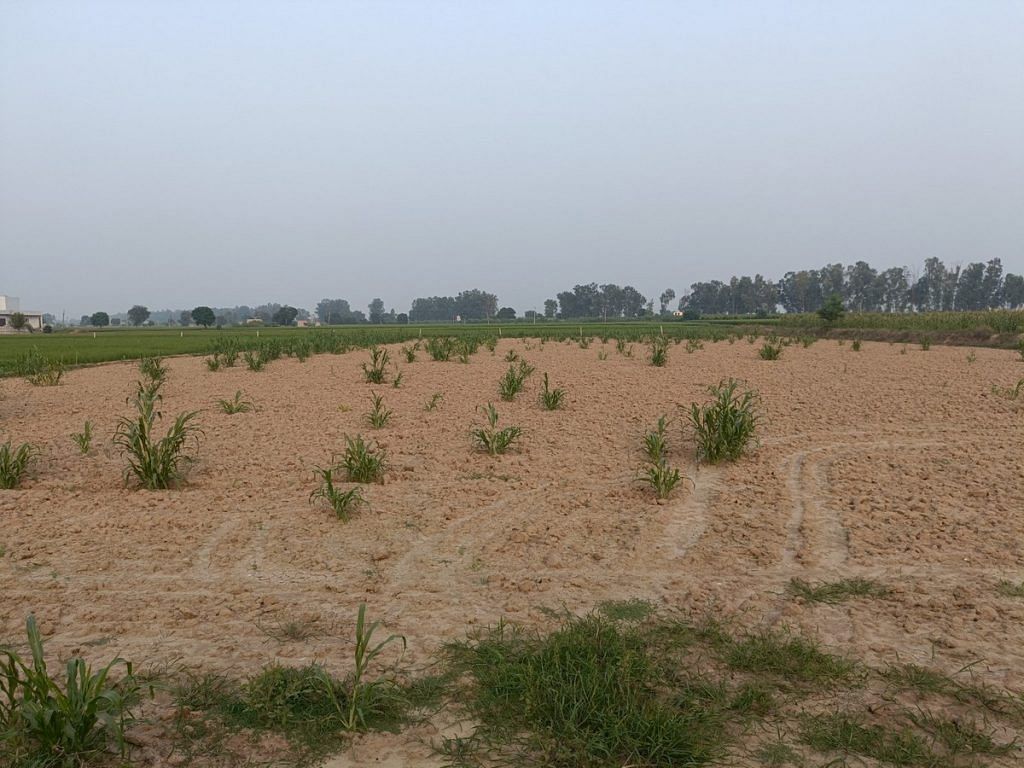
Across Haryana, farmers have been telling similar stories. Jinder, from Sisana village in Sonepat, didn’t even bother with paddy this year. The monsoon came so late, he knew it wasn’t worth the risk. Instead, he planned to wait until the last week of September, when the rains usually taper off, to plant carrots and radishes on his 1-acre field. But even that plan was washed away.
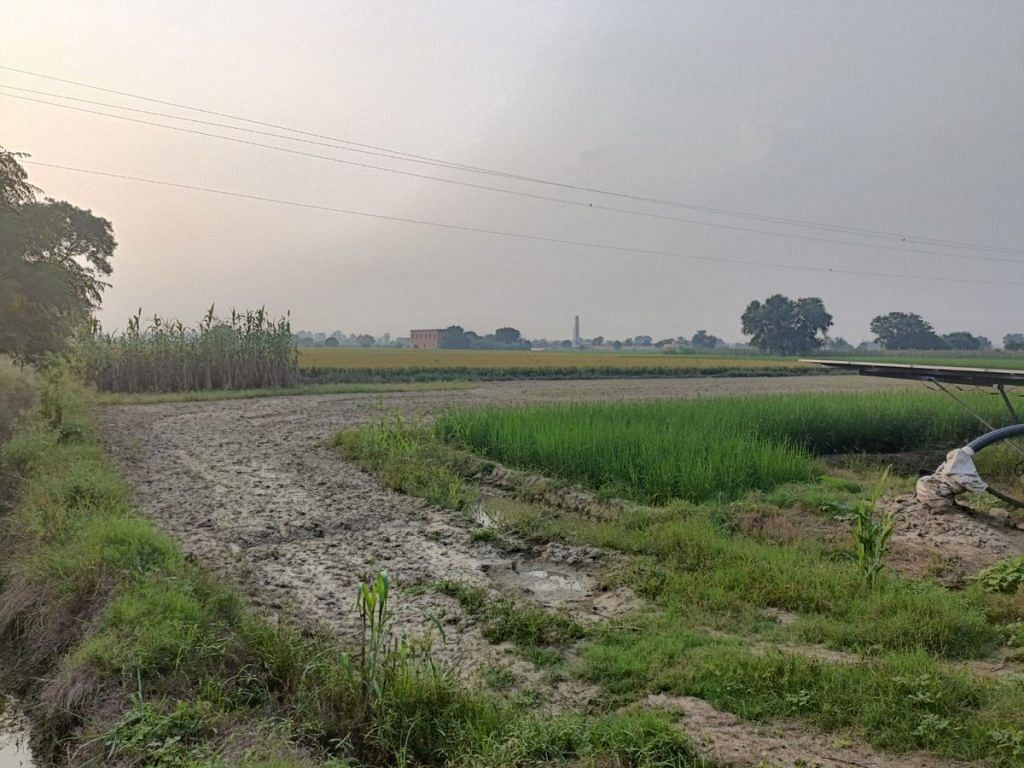
“The rains last week have left so much moisture in the ground that I’m unable to till the land properly. Until it is dry enough, I won’t be able to sow this crop,” he said. “But because I skipped paddy, I need to sow something this season to tide me through the year.”
With no tubewell on his farm and the declining water table in Haryana, he has little choice but to time his cultivation with the rains, like many other farmers across the region.
In Matindu, the village adjacent to Sisana, only about 50 per cent of the farmers have access to a tubewell for irrigation, said Captain Bijendra Dahiya, a former Army officer who now farms on a 3-acre field in Matindu and is a member of the Bharatiya Kisan Yuva Union (BKYU). Even the canals that usually bring water from dams in Punjab or Himachal Pradesh have been running dry over the past couple of years.
“For centuries, farmers have designed sowing schedules keeping the climate in mind,” said Dahiya. “But now we can’t even trust the climate.”
It’s not just the monsoon wreaking havoc. This February, sudden hailstorms ruined almost 95 per cent of the wheat yield, just as it was maturing, in Matindu village, farmers claimed.
A chaotic new pattern
In absolute terms, Haryana’s rainfall this monsoon season was only 3 per cent less than average. The problem, however, isn’t the total amount but the erratic distribution of monsoon rain.
Between 13 and 19 September, 18 out of 22 districts in the state received excess rainfall. In the same week, districts such as Faridabad, Ambala, Charkhi Dadri, Gurgaon, Parnal, Rewari and Sonepat saw more than a 100 per cent departure from their normal rainfall. And this when the IMD currently marks 17 September as the ‘official’ date of the monsoon’s withdrawal.
If the emission of greenhouse gases continue at the current rate, the monsoon variability will only worsen in the future
-Akshay Deoras, meteorologist & researcher
But this withdrawal date has been creeping later and later over the years.
In 2020, the IMD pushed back the ‘normal’ monsoon withdrawal date from 1 September to 17 September. Further, the IMD said it can take up to 15 October for the monsoon to fully exit parts of northern and western India.
“When there are rains and cloud cover, it indicates that the monsoon is still active and the withdrawal hasn’t begun,” said scientist Deoras. “Monsoon withdrawal happens when the monsoon current has weakened a lot, and dry air from arid regions such as Pakistan and Afghanistan enters India through northwest regions.”
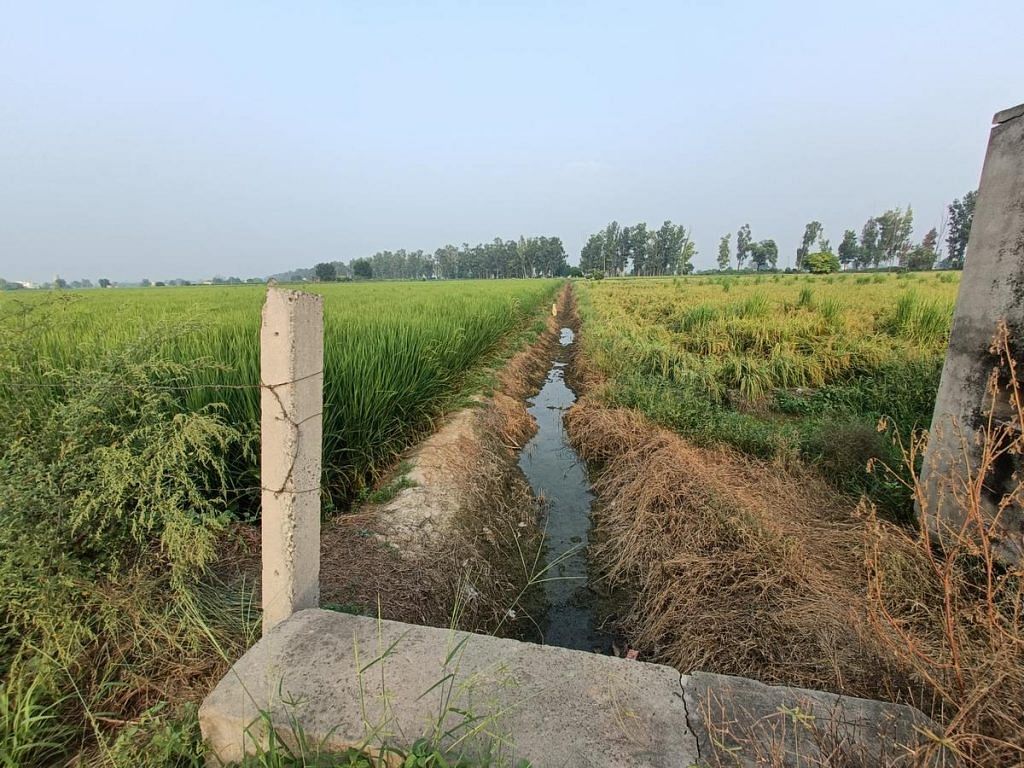
This erratic pattern of delayed withdrawals and unpredictable rainfall is not new. In 2019, the southwest monsoon didn’t start withdrawing until 9 October, over a month after the previous ‘normal’ date of 1 September.
Rajbir Singh said he remembers 2019 vividly—he and his neighbour Sandeep Singh were caught off guard by sudden rain showers just after harvesting their rice. They had left their harvest to dry in the fields and hadn’t anticipated rain in the first week of October. Both suffered losses.
Similarly, in 2020, the monsoon withdrawal was delayed by nearly two weeks due to a low-pressure system. That year, IMD data shows August and September had far more rain than July.
In 2022, too, despite what the statistics showed as ‘normal’ rainfall for many districts, the distribution was scattered. Weeks of deficit were followed by two weeks of excess rainfall, leading to waterlogged fields and disrupted agriculture.
“It is no secret that rainfall patterns are becoming more erratic because of climate change. Monsoon has always varied over time and space, but not to this extent,” said Deoras.
This, according to him, calls into question the country-wide reliance on average rainfall statistics, which don’t tell “the real story” of rainfall variability across regions.
“If the emission of greenhouse gases continue at the current rate, the monsoon variability will only worsen in the future,” Deoras added.
Some farmers in Matindu, Sisana, and other Sonepat villages have started switching from rice underground crops like carrots, turmeric, and ginger, which are more resistant to heavy rains.
Also Read: 20 UP villages lost their beloved Sakarni River decades ago. They just got it back this July
Climate resistance, rice trap
Many rice farmers in Haryana do not want to grow the crop anymore. But they say they are caught in its chokehold. They’re frustrated by its water, labour, and resource demands, as well as its vulnerability to extreme weather.
Adding to their burden is the government pressure to stop burning stubble—a treatment of leftover crop residue that creates a haze of pollution over Delhi-NCR, starting October. Government solutions, such as super-seeder machines, ethanol plants, and boilers, are either unavailable in most districts or too expensive, even with subsidies.
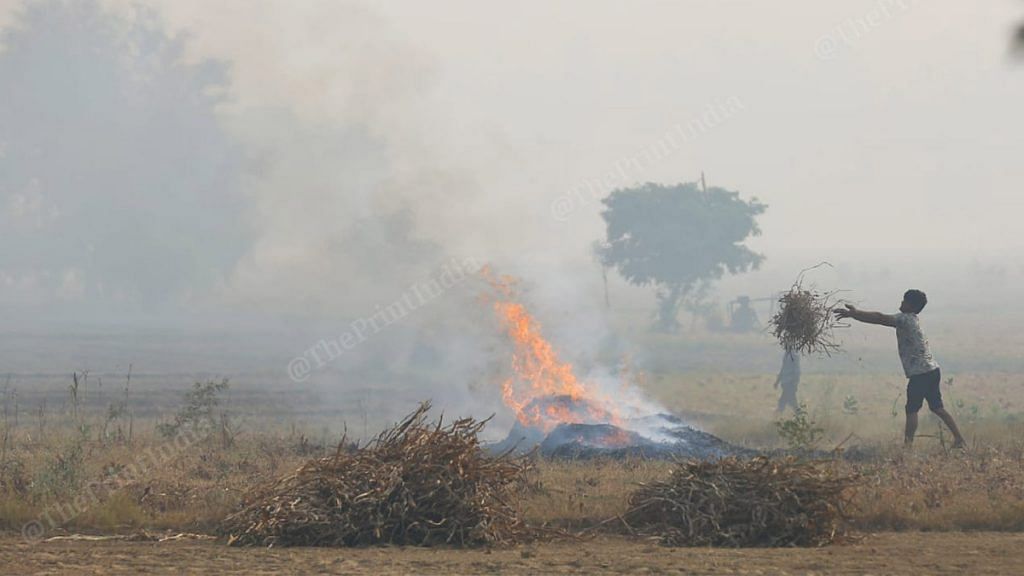
This year, the late monsoon delayed rice sowing, pushing harvest dangerously close to wheat-sowing season. With barely a week between harvesting rice by 25 October and sowing wheat by 1 November, farmers are in a quandary. Clearing the fields of stubble and preparing the soil for sowing in such a short time is nearly impossible. The easiest solution is to burn the stubble. It takes less manpower, kills insects from the rice crop, and the ashes also help prepare the soil.
Farmers in Haryana are wary of alternatives like super-seeders, which bury the stubble and wheat seeds together, thus risking insect infestations from the leftover rice stalks.
“When a farmer is only able to harvest his rice by mid-October and has to sow wheat by 1 November, how will he get the time to remove the stubble?” asked BKYU member Bijender Dahiya.
Despite all these issues, rice remains the go-to crop because of the Minimum Support Price (MSP) guarantees. Without that financial safety net, alternative crops like bajra and cotton are unviable to produce.
But even with MSP guarantees, the increasingly fickle climate is making ‘reliable’ rice and wheat harder to grow.
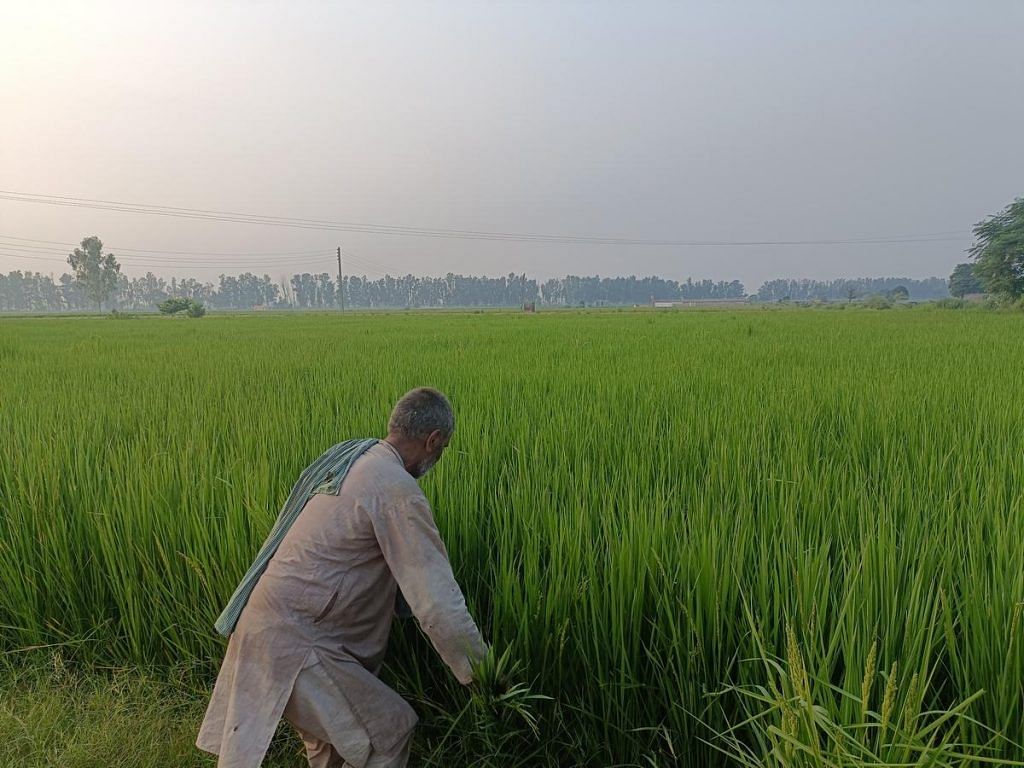
It’s not just the monsoon wreaking havoc. This February, sudden hailstorms ruined almost 95 per cent of the wheat yield, just as it was maturing, in Matindu village, farmers claimed. Rising heat is another problem. Rice needs a temperature of 25-28°C for optimal harvesting, but late September and early October temperatures in Haryana now often hit 30-32°C, which has an adverse effect on rice quality.
While the government has plans for climate-resistant farming—and Prime Minister Narendra Modi released 109 high-yielding, climate-resilient crop varieties in August—farmers have no immediate solutions. Some like Dahiya argue that the state should compensate them for climate-induced crop losses.
Farmers have been adjusting their cropping patterns in response to the shifting climate, but the erratic patterns have left them in a bind.
Ten years ago, nearly 90 per cent of Matindu village grew bajra, a hardy, drought-resistant crop suited to the region’s dry conditions. But with rain now often continuing into September—right when bajra matures—the crop has become more susceptible to waterlogging. Today, only about 10 per cent of farmers in the village still grow it.
Many farmers are now considering underground crops like carrots, turmeric, and ginger, which are more resistant to heavy rains. Without MSPs these are a financial gamble, but with the climate already turning farming into a game of roulette, some in Matindu, Sisana, and other Sonepat villages have started switching to these crops.
The problem, though, is price volatility. Deshpal, a farmer from Matindu, said that an acre of land can yield 300-350 quintals of carrots, but prices range from Rs 800 to Rs 1,300 per quintal, depending on market conditions. Without the income stability provided by MSPs, many farmers are hesitant about switching entirely to extreme weather-resistant crops.
“Rice was never suited for this landscape—it takes too much water. We don’t even eat it and harvesting it is a pain in these conditions,” said Dahiya. “But if I grow anything else, who will buy it? I’m compelled to only grow rice.”
(Edited by Asavari Singh)



